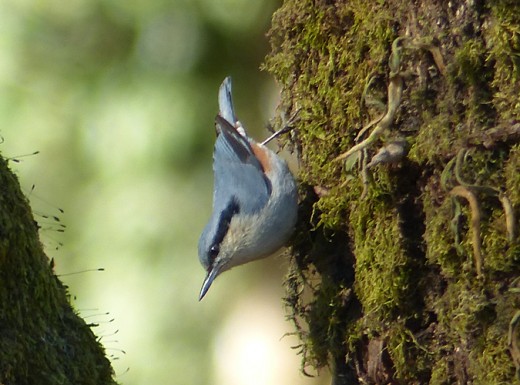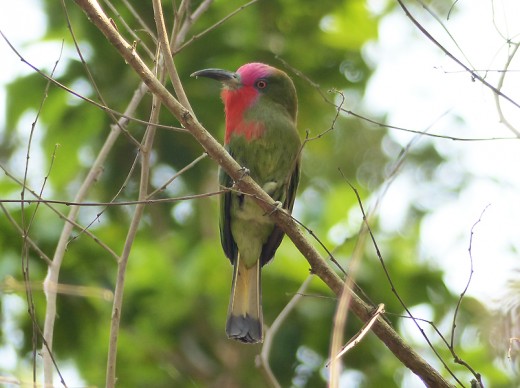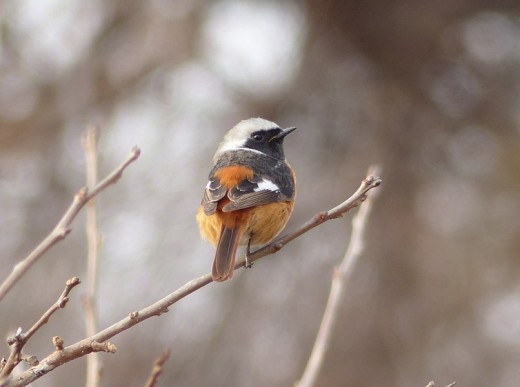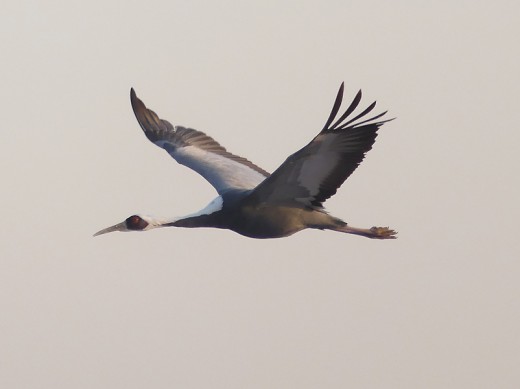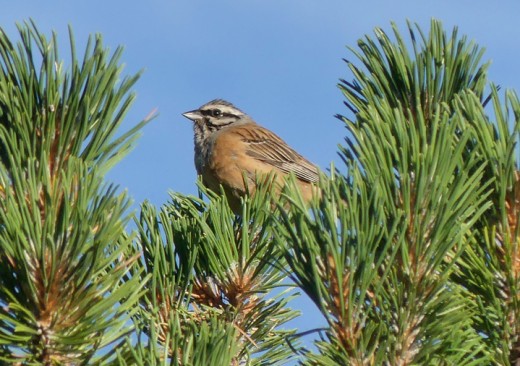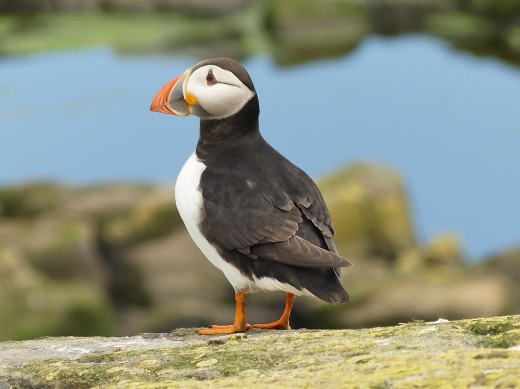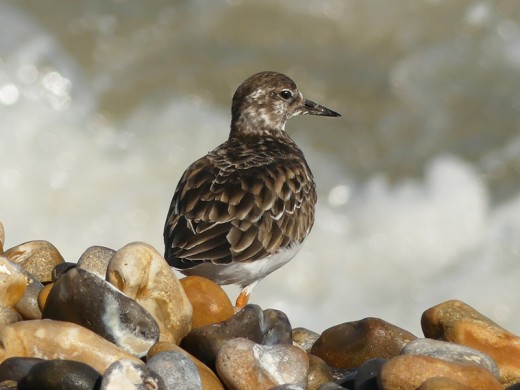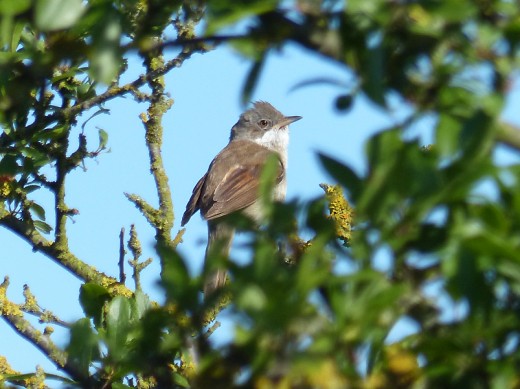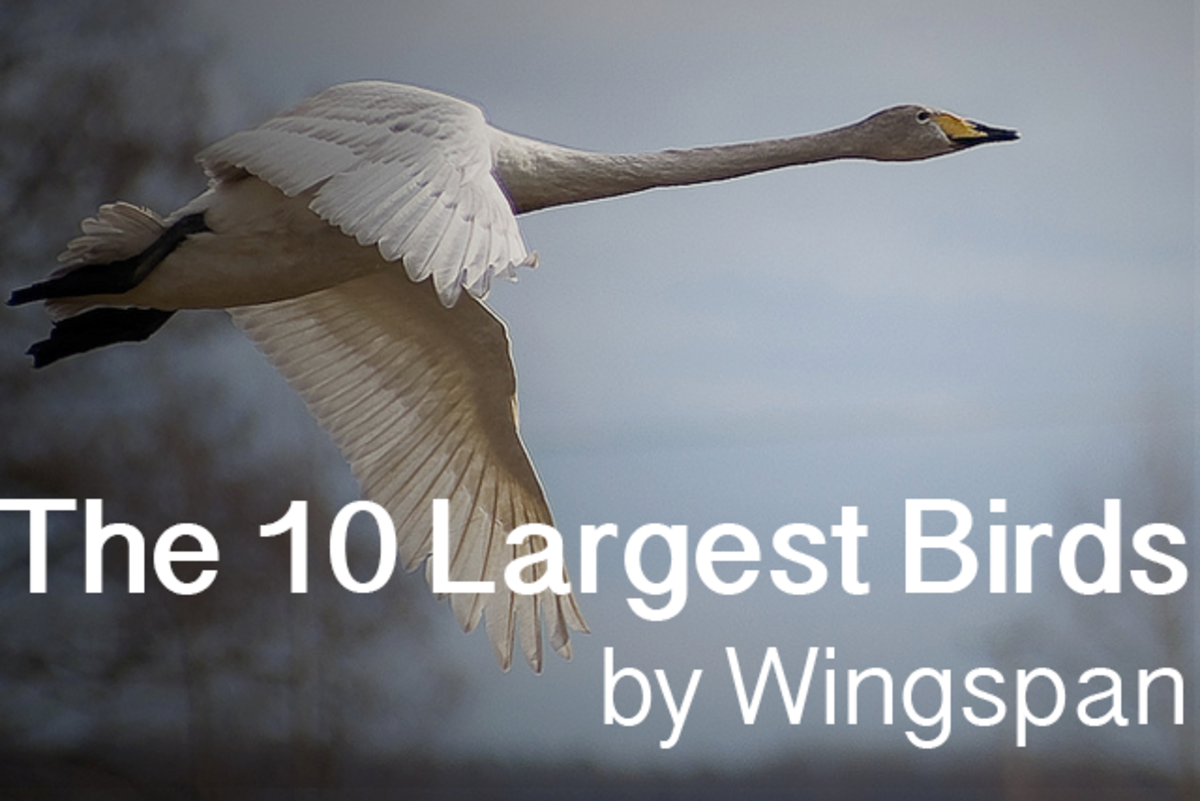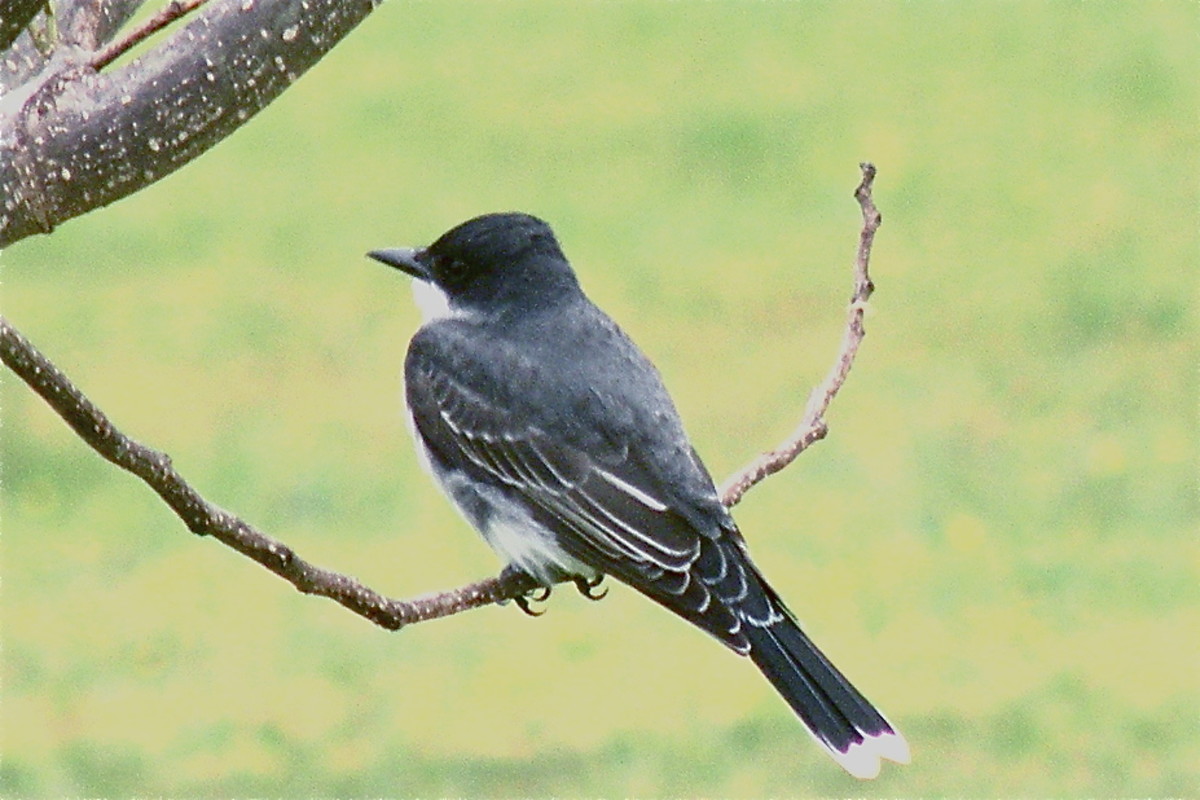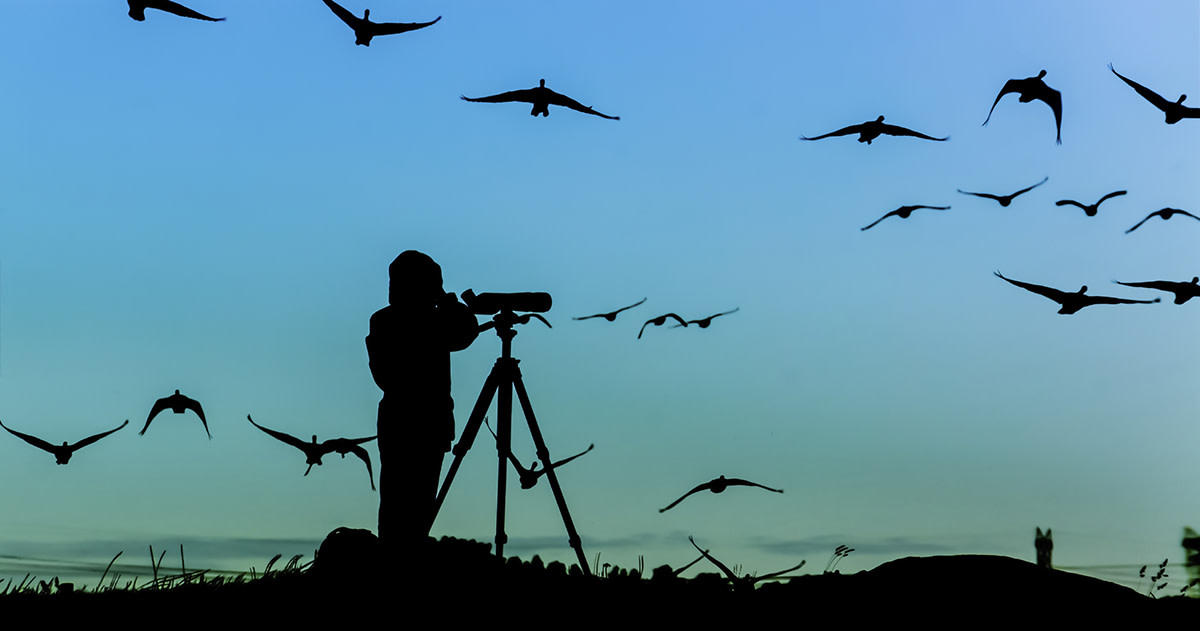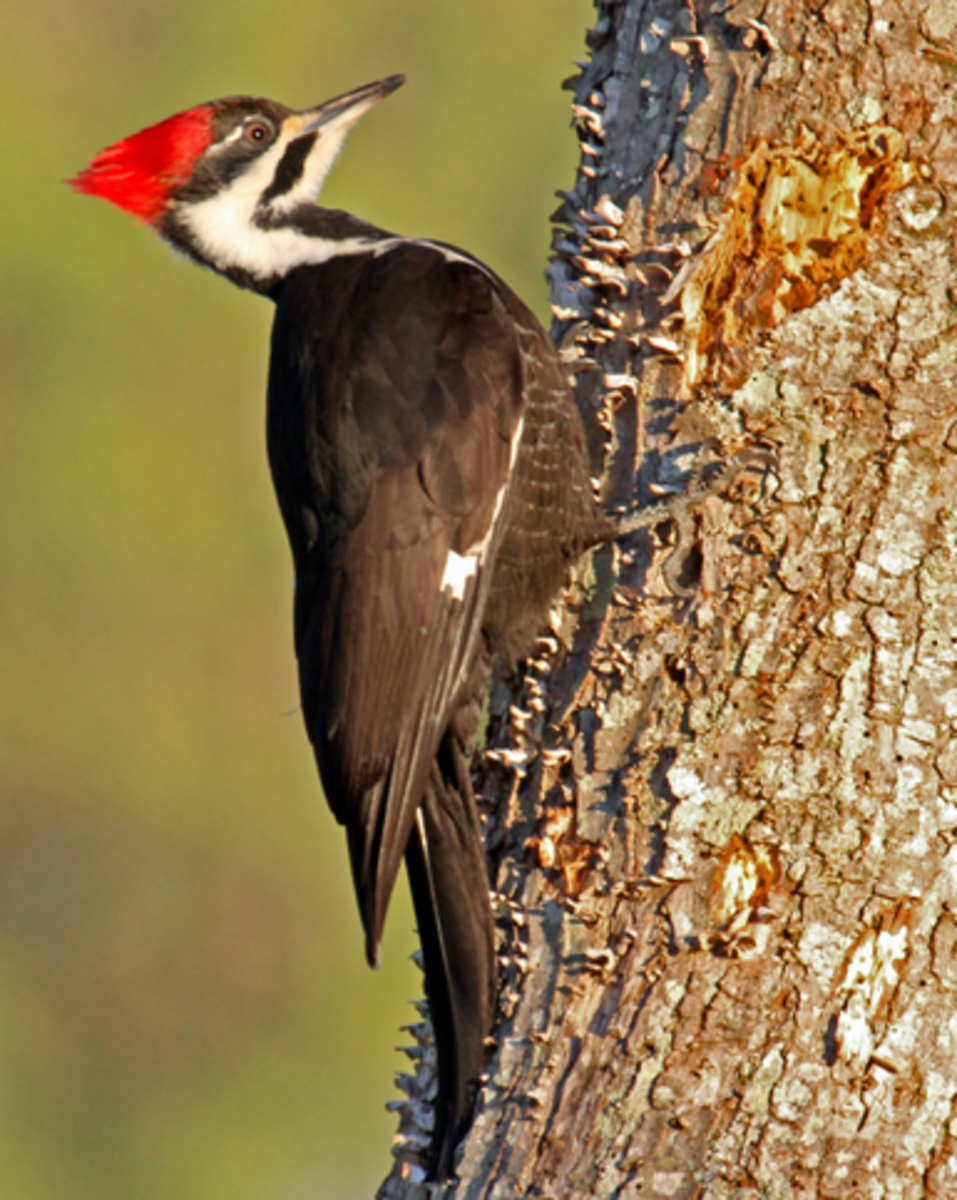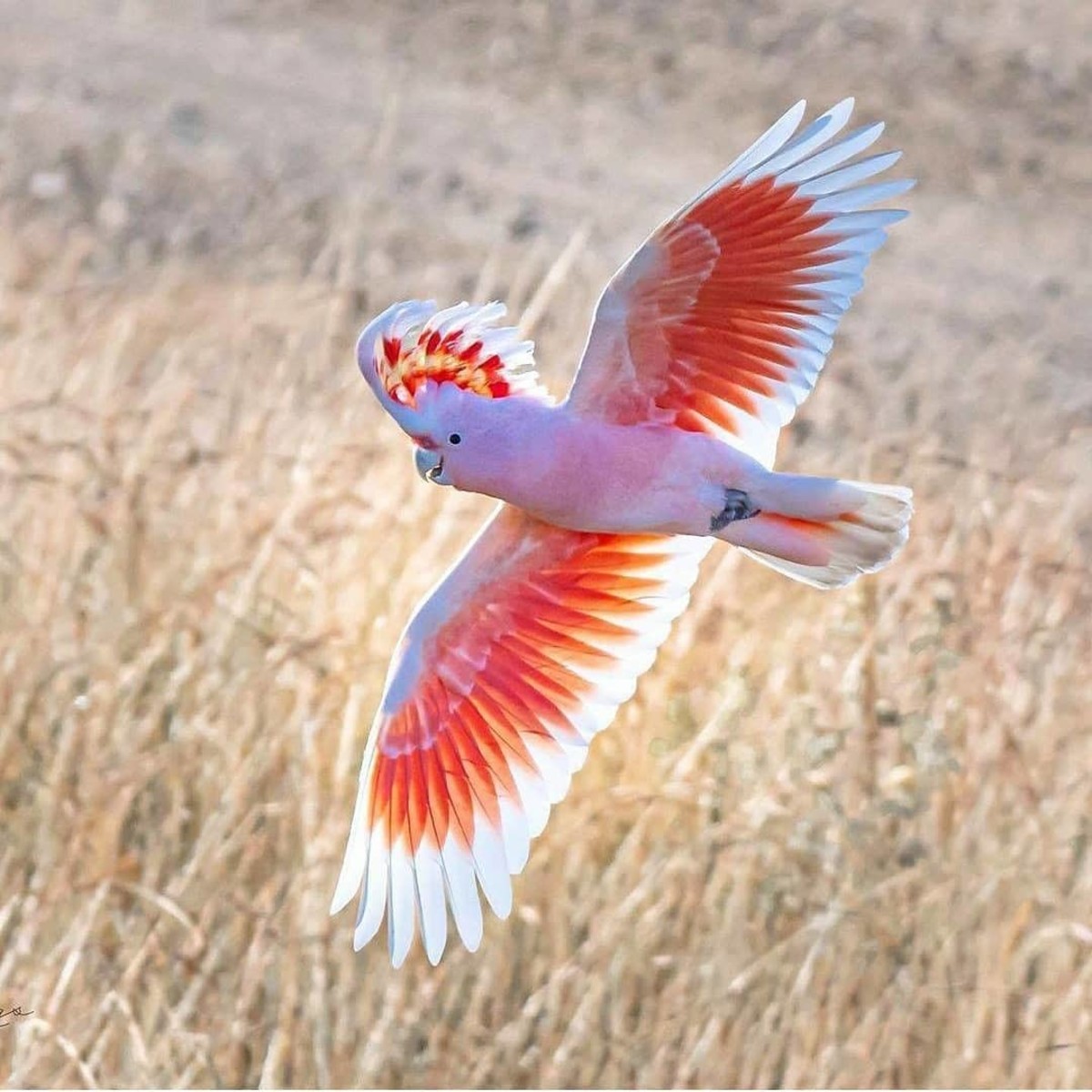How to Be a Good Birdwatcher - 19 Tips.

Birdwatching Tips
I have been birdwatching for over 40 years now and have been a "professional" birder since 2008 and whilst I would not claim to know everything, I hope that in this lens I can pass on a few tips and tricks that I have learned to other birdwatchers.
Although birdwatching is a hobby, something that is done for enjoyment, there are many ways to become a better birdwatcher in terms of finding birds, recording birds, being more sympathetic to birds needs and contributing to bird conservation.
Currently, this page, "How to be a good birdwatcher" , gives 19 tips on how to be a good birdwatcher but more will be added. Hopefully birdwatchers can use these tips to see more birds and to contribute towards bird conservation.
Are You An Experienced Birdwatcher?
Are you a very experienced birder?
1. Learn Bird Songs And Bird Calls
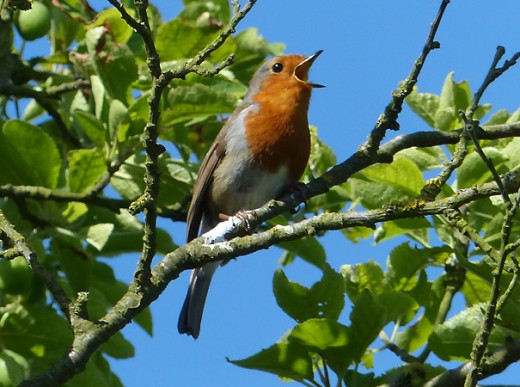
A good birdwatcher can see more birds if he/she knows bird calls
Some birds are conspicuous and easily seen. Many other species, however, are more easily located by their call and others can really only be identified by call.
Learning bird calls not only makes finding and identifying birds easier, it also allows birdwatchers to learn more about bird behaviour: I learned about the mimicry abilities of Reed Warblers by identifying the calls of 14 species in the song of one individual.
Furthermore, many species can be enjoyed for their calls and songs and ignorance of them can limit birdwatchers' enjoyment. Skylarks singing in the summer are one of my favourites and Drongos mimicking sounds such as car alarms are superb.
By following this tip one will increase the number of birds seen enormously.
An excellent source of bird calls is available free on this website: Xena Canto: sharing bird songs from around the world.
2. Join Your Local Birdlife International Partner - Support bird conservation

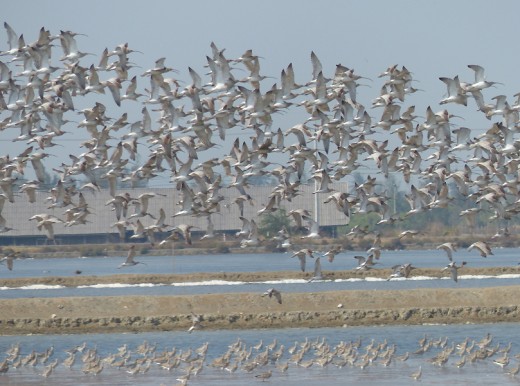
"BirdLife International is a global Partnership of conservation organisations that strives to conserve birds, their habitats and global biodiversity, working with people towards sustainability in the use of natural resources." - Birdlife International.
By joining your national Birdlife International partner you will be supporting bird conservation projects near your home. Projects range from directly conserving habitats for birds to increasing awareness of conservation issues amongst local peoples.
A list of global Birdlife International partners can be found here: Birdlife International partners.
Join The RSPB; The Royal Society for the Protection of Birds is one of the world's most effective conservation bodies
If you are from the UK then your birdlife partner is the Royal Society for the Protection of Birds. They are one of the most effective bird conservation bodies in the world with hundreds of reserves, conservation action on issues such as climate change and overfishing, and they are now involved in rainforest conservation in Sumatra.
Please consider joining them by clicking on this link.
3. Do A Bird Survey - Count Your Local Birds
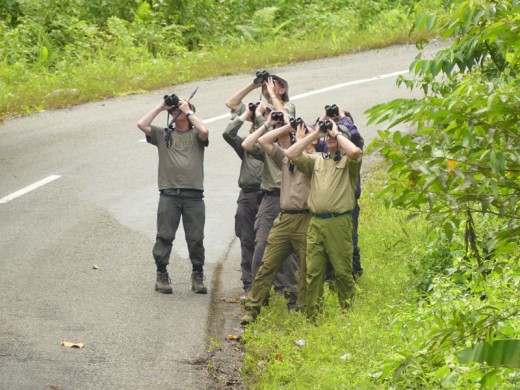
Conducting bird surveys really helps birders discover more about the species being surveyed. One can either take part in surveys organised by various conservation bodies or start some self-initiated surveys.
Taking part in organised surveys is a good way to help provide data that can be used in conservation planning and also in making birding contacts. The RSPB have an annual garden birdwatch survey that people are encouraged to help with
Self-initiated surveys can give birders a real insight into their survey area/species and can stimulate others' interest and research into the area. Surveys can be as simple as recording the numbers of birds that daily come into a garden or as complex as plotting the territories of a certain species within ones local patch. A survey like this might well reveal locally or nationally important numbers of a species in the area. Take a look at some surveying I have done in Britain to see what I mean: Survey of Calling Male Corn Buntings.
4. Buy A Digital Camera
Taking a digital camera on all birding trips/walks in the countryside will give you a valuable tool for obtaining record shots of species which are notable. Even a simple compact camera will give shots good enough for verification of many species.
Carrying a camera will also give the opportunity of taking shots of any illegal, bird disturbing behaviour such as trapping, netting, shooting etc so that it can be used as proof of the crime.
Taking a digital camera will also allow one to get some nice photos to illustrate a birding blog.
With a more expensive camera, excellent shots of the birds themselves can be taken. One of the advantages of bird photography is that staying in one place photographing a bird can often lead to the discovery of other species and certainly allows more time to study the behaviour and plumage of the bird being photographed. Photographs also allow for the later identification of difficult species.

Some of my Bird Photos
Click thumbnail to view full-size







6. Get Some Good Quality Binoculars
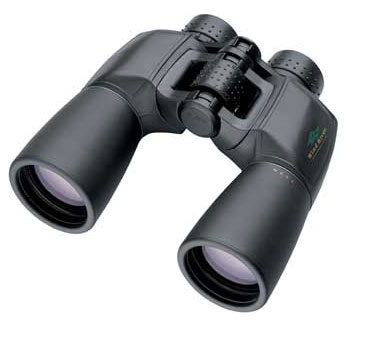
Binoculars are the most basic tool that birders need. It is possible to appreciate birds with the naked eye but to really observe a large number of species a pair of binoculars are absolutely essential.
For beginners a pair of 8x30 or 8x40 binoculars are ideal. 8 is the magnification and 30 or 40 is the field of view. The wider the field of view, the more light that enters the binoculars making for a better quality image particularly in low light conditions.
For more advanced birders 10x40 or 10x50 binoculars are superb. The greater magnification allows birders to see more details on distant birds but the decreased field of view makes it harder to spot fast-moving birds that are quite close.
I would advise against using very small pairs of binoculars that are something akin to opera glasses. I know that many manufacturers make this style of binocular with some excellent quality glass in these days but the narrow field of view that these give the observer is terrible and make it very hard to locate birds. I know for some beginners it is tempting to go for what look like beginners binoculars but using this sort of thing will make life very hard and spoil your enjoyment of bird watching.
8. Learn To Walk Quietly
I frequently take people birdwatching in tropical forests and it is amazing how much noise even experienced birders can make; to see many species of ground dwelling birds one MUST walk as quietly as possible. Although it can be difficult to walk quietly on a forest floor littered with leaves, clinging vines, spiky thorns and fallen logs, one can learn to minimise the noise in a number of ways;
Lift ones feet for every step rather than scuffing along.Place your feet on sturdy rocks, logs and mud rather than treading on leaves and twigs which will make noise.Walk very slowly and deliberately instead of rushing along.Place ones heels down first and slowly ease the rest of the foot down instead of crashing the whole of the foot to the ground in one go.When on roads, walk on compressed surfaces and not on loose gravel.Learn to use ones whole body when walking to swerve past hanging branches etc rather than taking extra, noisy, steps around them.Finally, one piece of information that will seem contrary to what most people have been taught: that is to wear trainers/sneakers rather than boots. Although boots give more protection, they also restrict movement and result in a rather noisy, crashing footfall, whereas trainers/sneakers give your foot the suppleness to walk quietly.
9. Feed Your Local Birds
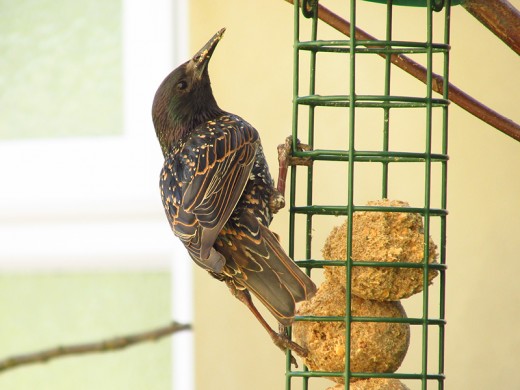
Feeding birds is a wonderful way to see birds close up and to take time to observe features such as feather detail, colours, intricate patterns and other features that are difficult to discern at long range.
Birdwatching at bird feeders really allows you to become familiar with distinctive behaviour of certain species and identifying them in the field will become instantaneous just from the characteristic flick of a wing, flight pattern etc.
Feeding Birds Video Clip
Feeding birds in the garden is also a great way of helping certain species and many migratory birds such as hummingbirds become dependent on certain feeding stations on their route. Certain species have come to reply on backgarden feeding stations to survivie through the harsh northern winter as agricultural processes have changed.
10. Get Yourself A "Local Patch"
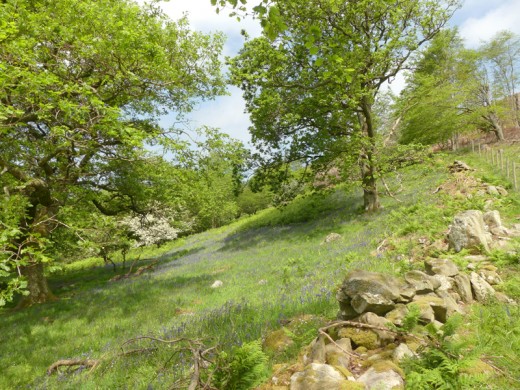
A local patch is an area that a birdwatcher goes to on a regular basis and is close to his/her home. A local patch can be your backgarden, some fields or wasteland within walking distance of your home, a park, some woodland or a recognised nature reserve.
The point about a local patch is to go regularly.
By birdwatching in the same place on a regular basis you will notice things about bird behaviour, migration, habitat preference, courtship displays, feeding activity and suchlike that you would not be aware of without such regular watching. This is how experts become experts.
One of the appeals of having a local patch that is unique to yourself is that it feels close to your heart and the birds will become your own and with this intimacy you will learn things that you would not without it. Also, you will quickly become the world expert on your local patch.
Local Patch Video
Take a look at this video I made about birding at one of my local patches in South east England.
11. Subscribe To A Birdwatching Magazine
Bird watching magazines are a fantastic source of information on all things related to bird watching and the editors and contributors are constantly writing articles to help birdwatchers understand birds and to find birds.
Usually, bird watching magazines have a letters page where questions are answered, talk about conservation issues, give tips on bird identification, contain articles on where to watch birds and carry reviews of optical equipment and books.
Certainly, regularly reading bird watching magazines has helped me learn a lot and they will continue to do so.
12. Use an Umbrella
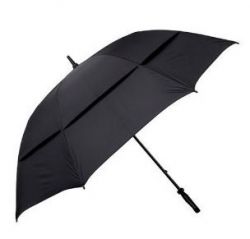
Being an outdoor pursuit, birdwatchers are inevitably going to get wet sometimes (or more than sometimes). Rain can really make birdwatching difficult as birds shelter and raindrops make every leaf move, making it difficult to spot birds in foliage.
Well, an umbrella cannot help that, but what it can do (at least in light rain) is to protect you from the worst of the weather, protect you binoculars and at the same time still allow you to listen. Using an umbrella, rather than a hood, allows you to still hear any birds that may call, whereas a hood makes a constant rustling noise next to your ears.
How do I Hold an Umbrella and binoculars?
To do this, you will need the type of umbrella that has a sturdy, long handle, preferably with a hook at the end. The hook can be used to fasten the umbrella to your belt whilst not using it, keeping your hands free. When it is raining and you need to hold the umbrella and your binoculars, the hook can be used to counterbalance the parasol as you rest it over your shoulder. In this fashion, the umbrella can balance on your shoulder, protecting you and your binoculars from the rain, leaving your hands free to hold your optics steady.
It takes some practice, but it isn't that difficult.
Oh, one more thing! Don't forget to get a dark-coloured umbrella so as not to scare the birds away.
13. Get A Good Identification Guide
Identifying birds can be tricky, particularly with species that look very similar. Getting a well-researched, well-illustrated and reliable field guide is not as easy as it would seem when looking at the huge number available. Good field guides usually have a number of features;
1. A good field guide will usually have illustrations rather than photographs.
2. A good field guide will have a number of illustrations of each species, showing both sexes, juveniles and other plumages.
3. Good field guides will have clear range maps on the same or opposite page to the illustrations.
4. The best field guides have informative text, outlining distinctive behaviours, features, habitats that will help identify the bird.
5. A good field guide will have well-spaced illustrations that are clearly numbered, rather than have overcrowded plates.
6. The best field guides are illustrated by 1 or 2 artists so that there is consistency in the plates.
The Sibley Field Guides are recognized as the best for North America; they are perhaps the best field guides in the world.
Field Guide To The Birds Of Europe

14. Understand The Limitations Of Field Guides
This may seem contrary to tip number 13, but as essential as field guides are to birdwatchers, it is also important to understand that they have limitations; they are not closed books.
Even in parts of the world, like North America and Europe, where there are many birdwatchers and species are well understood, there are still many things to learn about bird behaviour, ecology and even their range. By the time a field guide is published, some of the information will be out of date; some birds will have become rarer, some birds will have expanded their range and some may have disappeared altogether.
Field guides for the most heavily watched parts of the world will be the most accurate, but those for areas that are less intensively watched will very much be "guide" books and there will much to add and to improve to them.
Use field guides as a guide, but make detailed observations and use all the information available to you, sometimes behaviour or habitat is much more useful than just simply looking at the illustrations.
15. Get A Copy Of Laura Erickson's "101 Ways To Help Birds"

16. Look For Sources Of Water
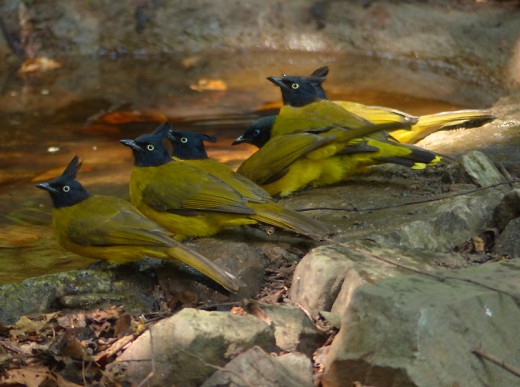
Birds, like all living things, require water. Most birds need to drink regularly and to do so they require a water source.
During times of low availability of water, birds' requirement to drink can be used advantageously in finding birds.
In times of drought small puddles in a river bed, the vestiges of a dried up lake or an ornamental pond can be excellent places to wait and observe birds when they come to drink. This tactic can sometimes lead to sightings of very secretive birds which are seldom seen as they are forced to go to the few remaining water sources available.
Remember that water shortages occur during very cold weather as well as very hot.
In very cold times most standing water will freeze and this means that the avilability of drinking water is reduced. Not only that, but birds which feed in the water will find it hard to forage. Finding an area of unfrozen water or creating one will mean that birders can enjoy views of many species as they come to drink and/or feed. On my local patch there is a spring fed watercress bed which does not freeze and in very cold winters is a superb place to see many species such as Woodcock, Snipe, Green Sandpiper, Grey Wagtail, Water Rail and even Bittern.
17. Learn How To "Pish"
A good Pish is an excellent skill to add to your birdwatching arsenal.
Pishing is the act of making hissing, scratching, kissing, crackling and other similar noises in order to encourage skulking birds to emerge from cover to take a look at the source of the noise. It may sound ridiculous but it can work.
With experience birders can know exactly which type of pishing sound to use to see particular species of birds. In Thailand I have found that a strong squeaky kissing sound makes Pied Fantails come swooping out of distant undergrowth and persistent ticking will eventually persuade Black-browed Reed Warbler to emerge from dense vegetation.
It is worth noting, however, that pishing seems to work best with migratory birds from northern latitudes; I have found it utterly useless in prizing most resident forest birds out of the jungle in Southeast Asia but have had success with the visitors from the north.
For UK or US birders, pishing is something to arm oneself with as the results can be excellent.
18. BE QUIET! Please.
It is incredible how many birdwatchers have accompanied me and have been really noisy! I had one group of birders with me that were constantly noisily talking and I had to resurrect the schoolteacher in me to repeatedly ask them to be quiet. Not only does being noisy scare away birds but it means that you cannot detect birds by sound.
Most of the time it is no problem, when birdwatching, to talk moderately quietly in low voices; birds are not particularly sensitive to this. But making sharp noises like dropping things, stepping on twigs, zipping bags and laughing really make birds nervous.
Being quiet is particularly important if waiting for birds at waterholes or food sources. Usually, before appearing to feed or drink, birds will very nervously check the area out, and any noise will frighten them off. It is important to remember that you may not frighten off the boldest of species but those rare and secretive birds that were waiting in the wings may never appear because of your talking or fidgeting.
19. Go on a Birding Tour
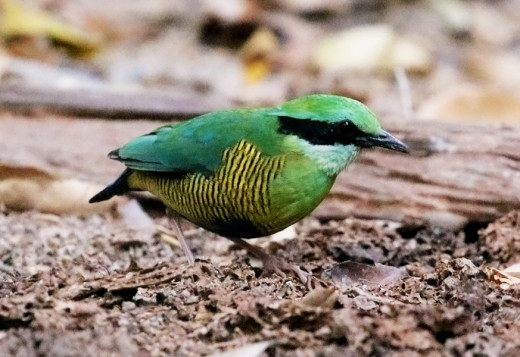
By joining a professionally-led bird watching tour you will not only see a lot more birds than you would on your own in the same amount of time but you will learn a lot about how to go birding from your guides and the other people on the trip with you.
Sharing ideas on any subject is always a good thing and in a birding group you get the opportunity to try new birding styles that you may not have previously thought of as well as learn about bird behaviour, conservation issues and the country that you are visiting. Of course don't forget to have fun, certainly on the tours I lead there is always time for a laugh, particularly in the evenings when we enjoy local food and drink.
Join me on one of my birding tours, there are lots of different itineraries to choose from: Calidris Birding Tours.
Comments
If there are any more birdwatching tips to pass on this is the place to leave them, or, just comment on those tips I have presented.

